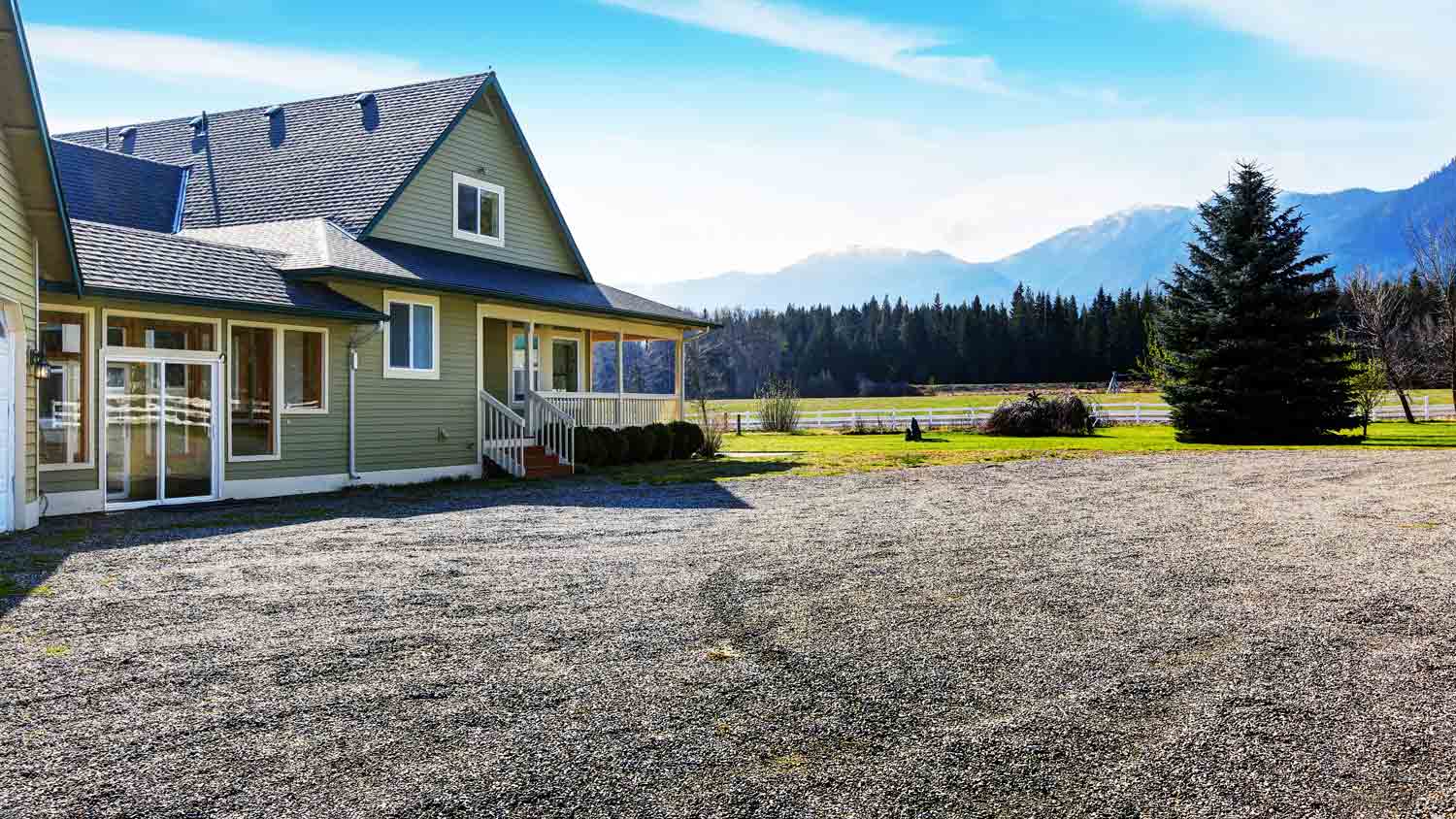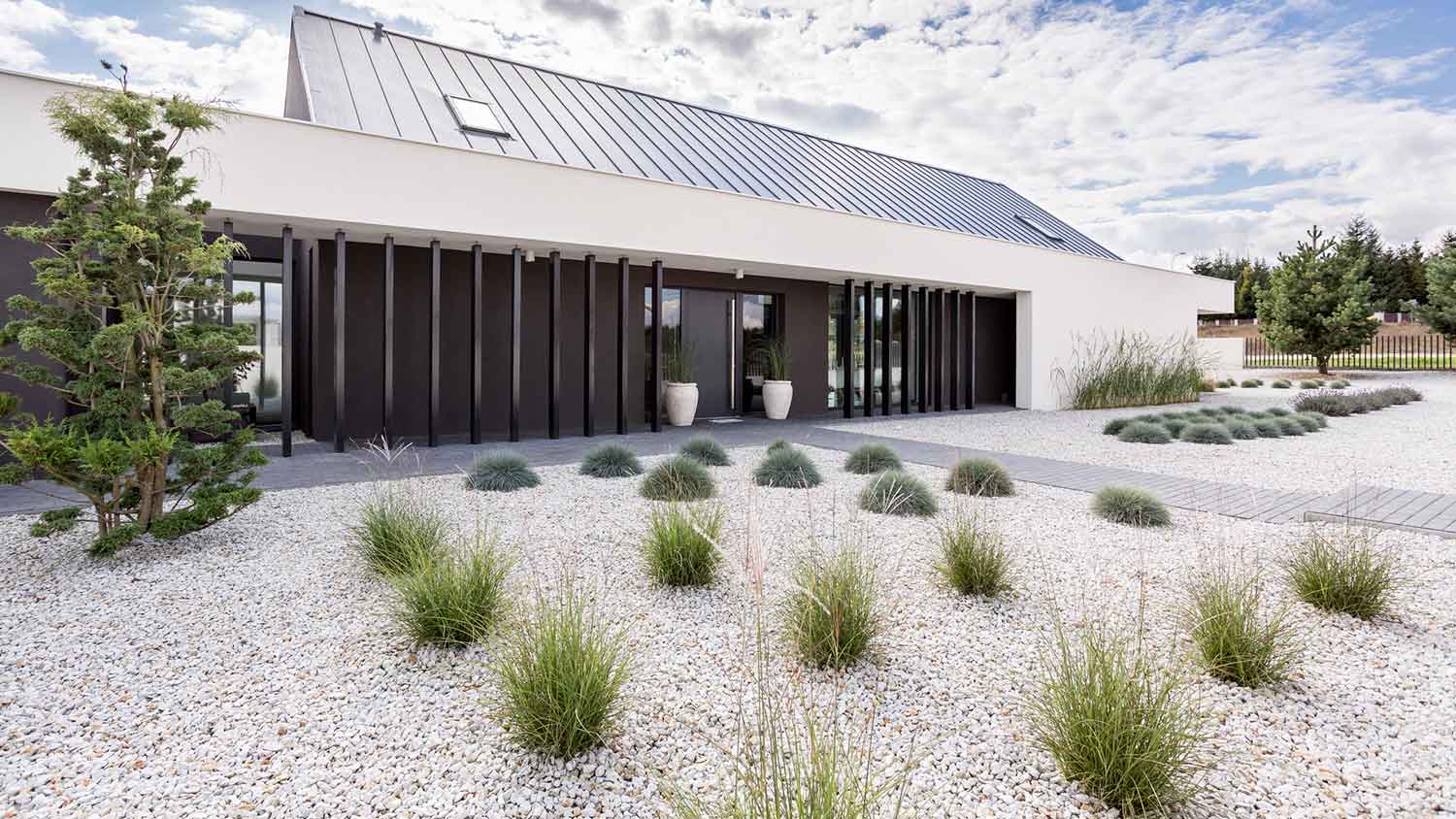
Discover the average gravel pad for shed cost, including installation, materials, and tips to save money. Get a detailed breakdown to plan your shed foundation project.
Let this versatile lawn alternative complement any yard aesthetic


White gravel can lighten up your outdoor landscape.
Green-tinted gravel reflects the hues of shrubs, trees, and grass.
Get the best of all worlds with mixed-color gravel.
Colored gravel is a great way to enhance features in your yard, like walking paths, ponds, and patios. From soft beige and cream to green and brown, there are many gravel colors to choose from. Here, we break down everything you need to know about popular gravel colors so you can find the perfect fit for your landscape.

Ranging from bright white to stark black and everything in between, the following gravel colors are great ways to enhance your outdoor aesthetic regardless of your color palette.
White gravel offers a modern touch to your landscape. The bright hue features a striking contrast against the organic colors found in most yards, like green, beige, and brown. It's also incredibly versatile, complementing a wide variety of house paint colors with its bright and airy appearance.
However, it's worth noting that white gravel paired with a similarly white house won't pop as much as it will when paired with other house colors.
If you like the versatility of white but you're seeking something a little softer and warmer, consider cream gravel. Its soft, neutral tones can enhance your yard with subtle contrast while infusing it with warm, welcoming tones. It also works well with virtually any house color, including white, so it's a great fit for most exterior aesthetics.
Darker than cream but not quite brown, beige gravel is perfect for anyone seeking a truly neutral gravel color. It mimics the color of the earth, so it looks incredibly natural, but it's still bright enough to lighten up your outdoor look.
And thanks to its neutral tones, you can use a lot of it without overwhelming your design, making it ideal for areas that require abundant gravel, like expansive walkways and gravel driveways.

Brown is a classic gravel color that never goes out of style. It's also another highly neutral option that will complement virtually any outdoor design, especially considering the different shades it comes in.
If you live in an area with reddish ground composed of clay, you can opt for red-tinted brown gravel to match. Similarly, if your earth is more brown than red, then you can choose true brown gravel to complement it.
Green gravel naturally reflects the colors of trees, shrubs, and grass, making it an especially good option for areas with lush plant life. It also matches many popular river rock options, so if you have a backyard water feature, like a pond, consider accenting it with green gravel pathways or trails.
Gray gravel is nearly universal when it comes to matching outdoor designs. It works just as well to complement lighter-colored houses and landscapes as it does darker aesthetics. Often featuring cool undertones, this gravel color also lends a calming quality to the landscape. Whether used abundantly or sparingly, it's the sort of color that will never cramp your style.
Looking to make a stylish statement? Consider adding striking black gravel to your exterior. The trendy hue is an easy way to modernize your landscape with compelling contrast, and it looks great with a variety of house paint colors and landscape designs. The clean lines that black gravel creates can also help to add definition to your look.
Can't decide on a color? No problem—just mix and match! You can choose from a wide variety of mixed gravel colors. Some mixes feature virtually every color of the rainbow, while others have a mix of just a few different neutral colors. You can also choose mixed gravel by tone, with some mixes featuring darker pebbles of different colors and others rocking brighter colors.

There's no reason that you need to pick just one gravel color for your entire landscape design. In fact, pairing two or more gravel colors can give your design depth and make it more dynamic. For instance, you can pair light-colored gravel, like white or beige, with darker colors, like black or dark gray, to add definition and compelling contrasts to your look.
You can also pair similar hues, like beige and white, to create subtler definition and add more depth to your design. If you decide to do this, it helps to pay attention to each color's tone.
For example, if your beige leans more warm than cool, then it will likely work best with a white that leans warm as well. Similarly, two cool-tinted colors, such as cool gray and white, tend to complement one another best.
Similarly to choosing gravel colors, you can do the same for landscaping rocks or pebbles. For example, you can choose complementary colors opposite to each other on the color wheel to bring a cohesive look to your home’s exterior.
For example, if you have vibrant red or orange flowers in your garden, you could choose green or yellow-green rocks. You could also go with analogous colors, which are any three colors next to each other on the color wheel, like various shades of red landscaping rocks.
Still not sure which colors to choose? Consider hiring a gravel pro near you to help. They can offer expert advice on gravel and rock designs, colors, and pairings so you can find the perfect fit for your landscape.
Monochrome rock colors offer a contemporary and chic look. For example, white rocks make for a clean, streamlined yard, allowing your colorful shrubbery or flowers to shine.
Black rocks offer a moody, luxurious vibe. Just like with the white rocks, any colorful landscaping or accents will contrast nicely against the rocks. This is a less common option, so your yard is sure to stand out in your neighborhood.
If you’re in a hot, sunny area, lighter rocks are the best choice. Light colors reflect light rather than absorb it, so your rocks stay cooler to the touch, and you can walk across them comfortably.
Kelly Weimert contributed to this article.
From average costs to expert advice, get all the answers you need to get your job done.

Discover the average gravel pad for shed cost, including installation, materials, and tips to save money. Get a detailed breakdown to plan your shed foundation project.

Discover the average gravel driveway cost, including price ranges, installation factors, and tips to help you budget for your new gravel driveway.

Gravel is loose rock that has been naturally eroded and is a popular choice for landscaping or pathways. Learn more about what gravel is used for in this article.

Find out the best types of landscaping rocks for your home’s next outdoor project, from solving drainage problems to installing retaining walls and terraces.

Choosing between crushed stone and gravel can impact your landscaping project. Keep reading to compare crushed stone vs. gravel and pick the best one.

The layer of dust on your driveway makes its way onto everything, including your car and windows. Learn how you can get rid of dust on your gravel driveway.